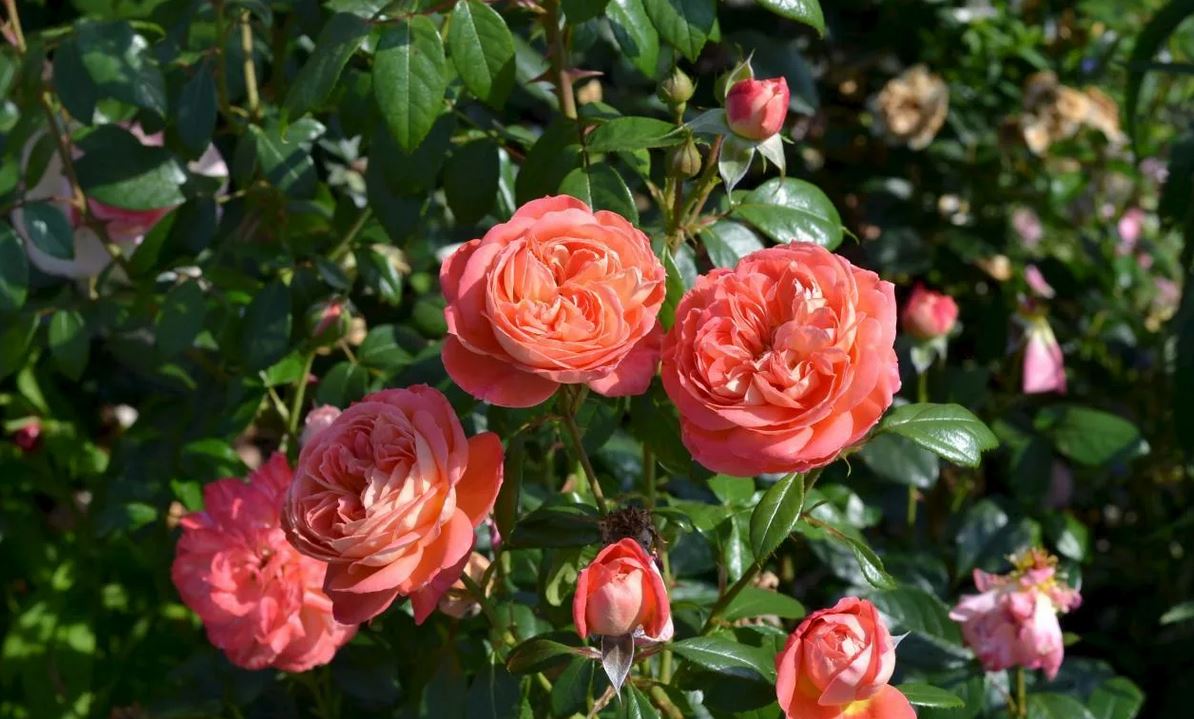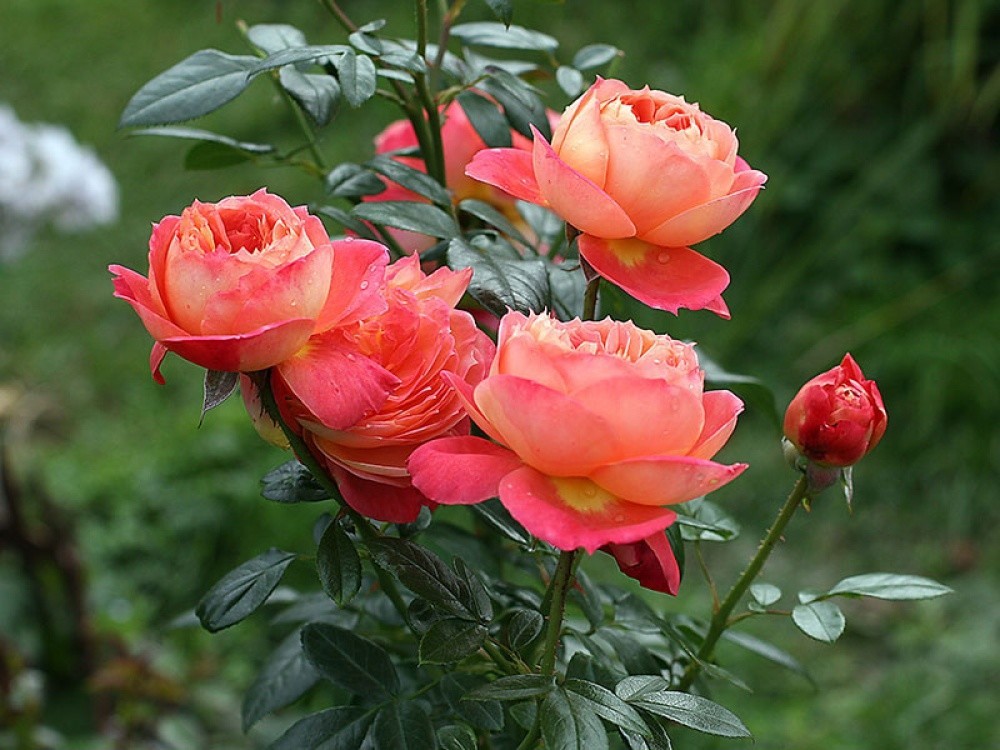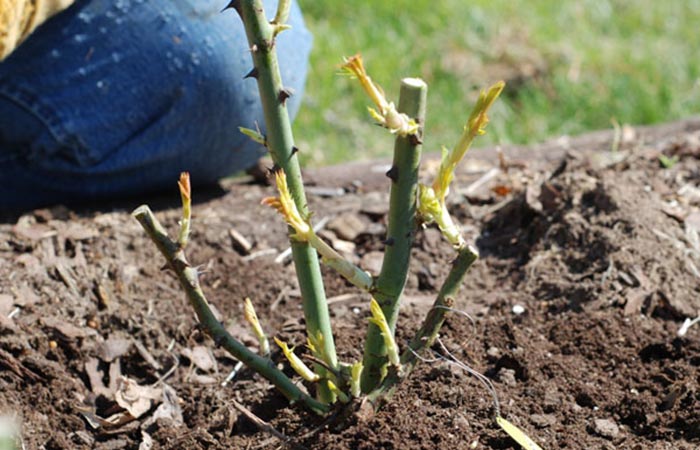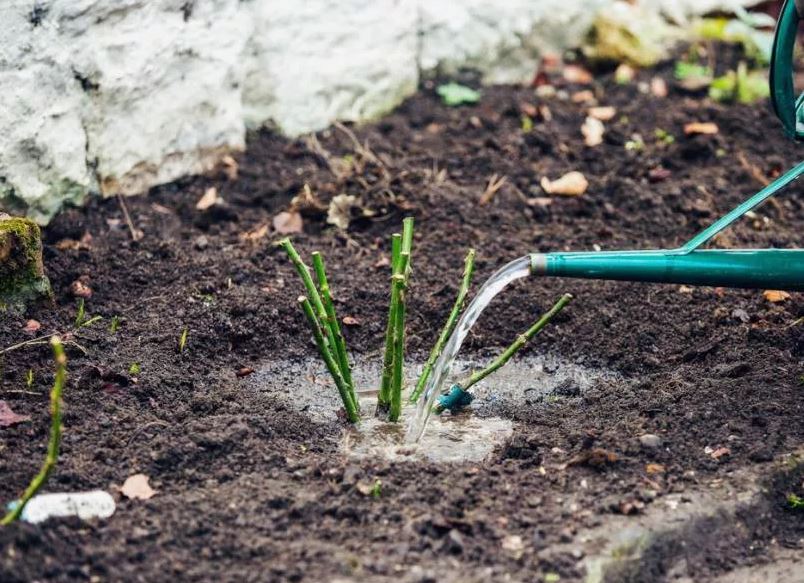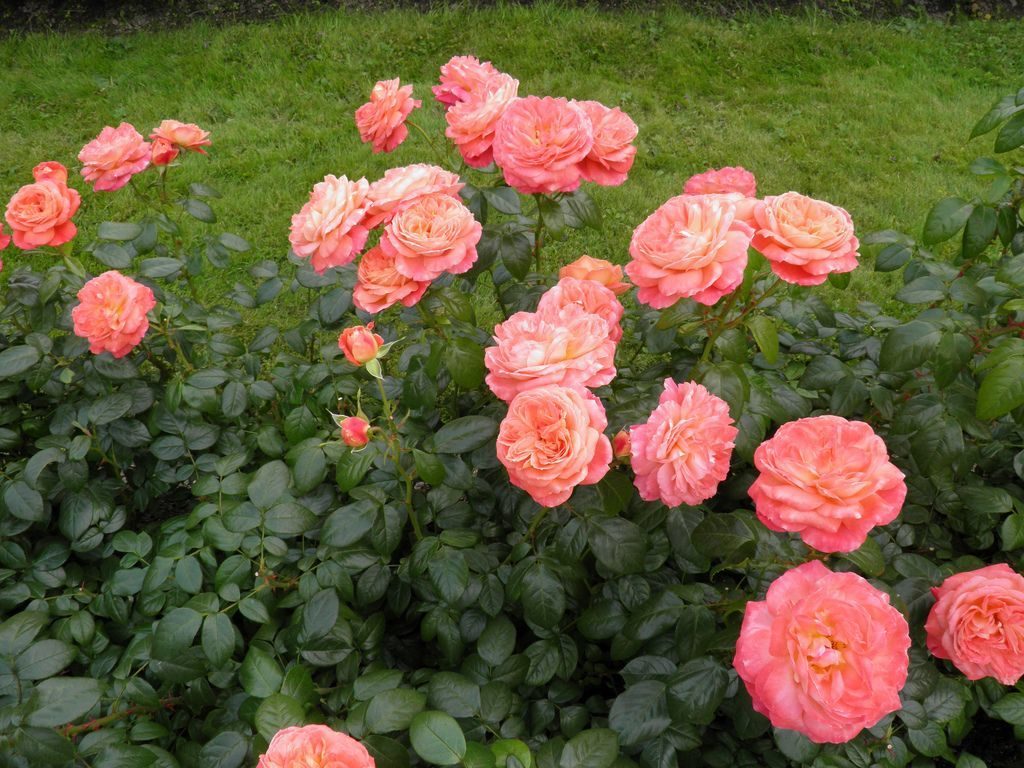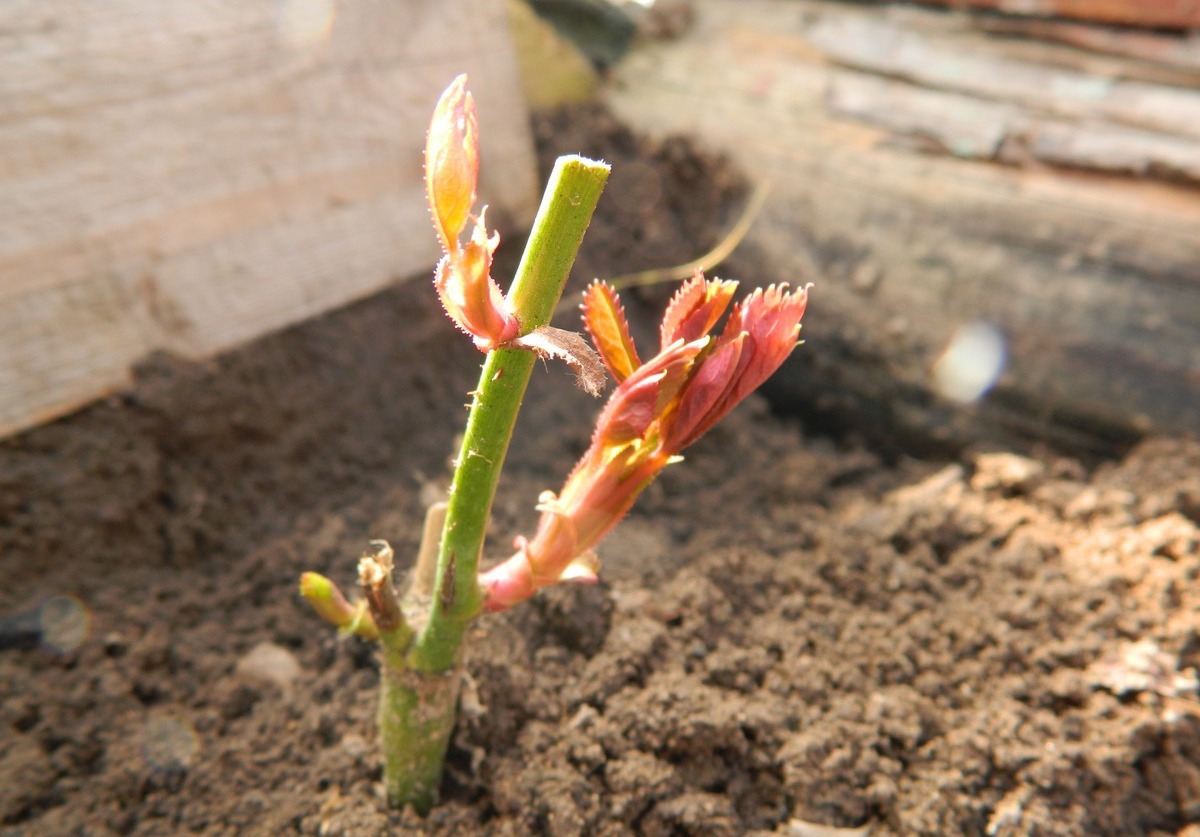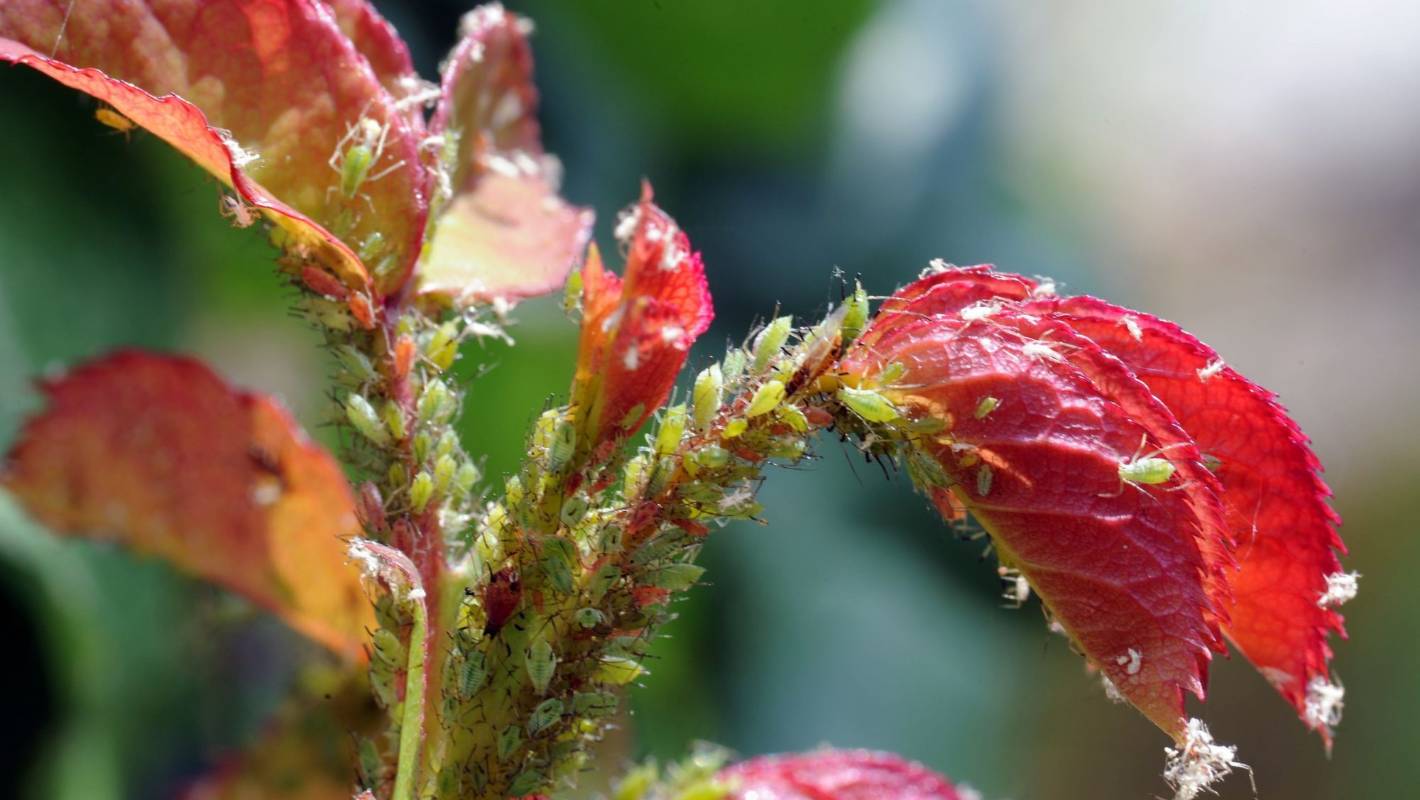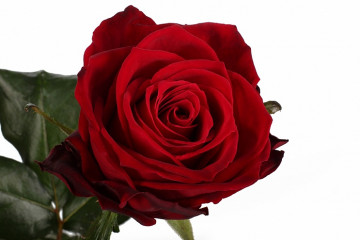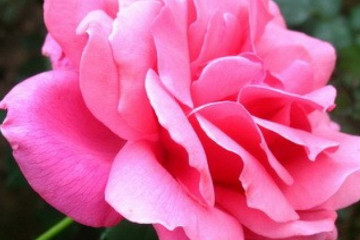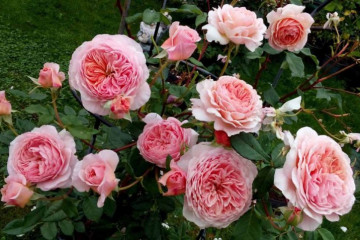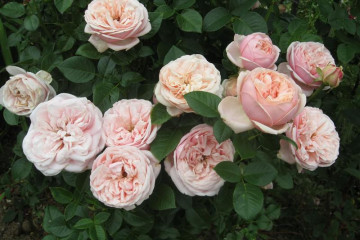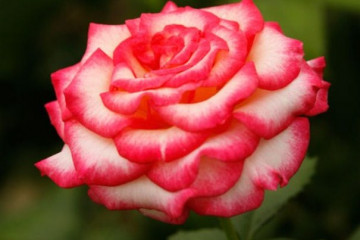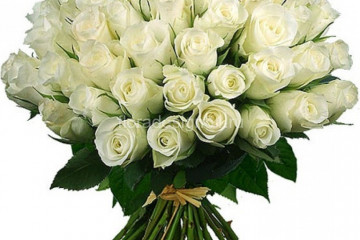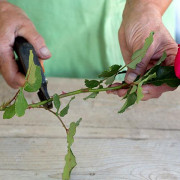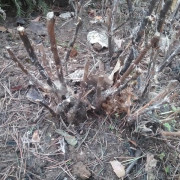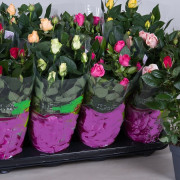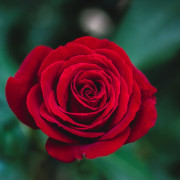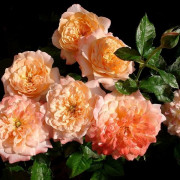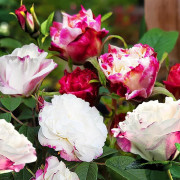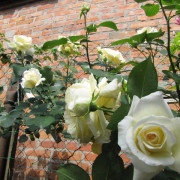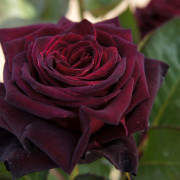Rose Queen of Hearts (Queen of Hearts)
Content:
Queen of Hearts is a floribunda rose with a charming salmon-orange shade of petals of large fragrant flowers. Delicate re-flowering variety has only one flaw - low frost resistance.
Rose Queen of Hearts (Queen of Hearts) - what is this variety, history of creation
It is officially known about the variety that it was obtained in the German nursery Kordes in 2008. The name translates as "queen of hearts". The seedlings received recognition from buyers quite quickly, since they have lush flowering combined with undemanding care.
Brief description, characteristic
The variety is characterized by large, double cupped flowers with neatly arranged petals. The average diameter of the corolla is about 8-10 cm. Flowers for a long time do not crumble on the bushes and in the cut. Usually buds are formed at the ends of the shoots in 2-4 pieces. The variety is re-flowering.
The size of the bush is small: height - up to 80 cm, width - up to 40 cm. The leaves are large with jagged edges, semi-glossy, dark green. Thorns are few, located mainly in the lower part of the bush on thick shoots.
Advantages and disadvantages of the variety
Among the advantages it is customary to note:
- compactness - bushes can be planted at a distance of only 40 cm from each other;
- high resistance to powdery mildew and black spot;
- flowers do not lose their attractiveness after rain;
- flowering is long, repeated, abundant.
The disadvantages are:
- low frost resistance - only up to -23 degrees (in regions with winter temperatures below -18, compulsory shelter is required);
- weak, barely perceptible delicate aroma;
- not very suitable for cutting due to short shoots.
Use in landscape design
Due to the compactness of the bush, it can be used for a single planting in free corners of the courtyard, the formation of a low hedge, in the company of undersized conifers. The rose looks beautiful next to hosts, ferns, as well as undersized ground cover flowering plants (alyssum, lobelia, purslane and others).
Growing roses Queen of Hearts, how to plant it in open ground
The variety is ideal for outdoor cultivation. Planting in a greenhouse is impractical, since it will not work to get a commercial cut from a bush.
How Hearts rose is planted
The hybrid variety is propagated only by seedlings. It is recommended to purchase them in specialized nurseries. The minimum height of the ground part of the seedling is 20 cm. It is best to purchase specimens with a closed root system.
What time is the boarding
The best period for planting is the end of May. At this time, stable warm weather is already established and there is no threat of frost damage to the bush.
Location selection
Transplanting rooted seedlings is contraindicated. The place for them is chosen with the expectation that the rose will grow in one place for many years. Groundwater should not rise to the surface, and melt and rainwater should not accumulate at the roots. It is good when the bush is in the shade for several hours during the day, and an obstacle located nearby will serve as protection from sudden gusts of wind.
How to prepare the soil and flower for planting
A seedling with an open root system must be soaked for a day in a bucket of water or a mash made of water and clay soil. Shorten the shoots with a sharp pruner, leaving no more than 2-3 buds from each fork.
Rose Queen of Hart is suitable for loam with a neutral acid-base reaction, enriched with humus, as well as components that impart friability (sand, peat, vermiculite, a little bit of lime).
Planting procedure step by step
The work on planting seedlings is carried out in the following order:
- A hole is dug slightly larger than the size of the root ball. A bucket of water is poured into it and left for a day.
- Sand, gravel, expanded clay or small stones for drainage are poured at the bottom of the planting holes.
- The soil taken out of the pit must be mixed with humus, add a little wood ash, 40 g of superphosphate.
- Place the seedling in the hole so that the root collar is recessed by 2-3 cm.
- Cover the roots with the prepared substrate, tamp lightly.
- Form a trunk circle around the bush.
- Drizzle.
- Mulch the soil with sawdust, compost or pine needles.
Plant care
The rules for caring for Queen of Hearts are the same as for other floribunda roses. Bushes require special attention in spring and during flowering.
Watering rules and humidity
Rose doesn't like overflow. If precipitation in a given area does not linger, it rains steadily at least once a week, then watering is not required at all. In a drought, it is necessary to water every week, pouring 10 liters under each bush, and this is done only in the evenings.
Top dressing and soil quality
The minimum amount of dressings is 5, they are carried out from May to September. The first is nitrogen, saltpeter or urea is added, diluting about 30 g in 10 liters of water. Subsequent fertilizing should be carried out at intervals of 2-3 weeks, alternating complex mineral fertilizer and organic fertilizer.
Pruning and replanting
In the spring, too old, broken and elongated shoots should be cut. Transplanting is carried out only in a hopeless situation, when the original place for the seedling was chosen unsuccessfully. The bush is dug out at the end of spring with roots and a lump of soil and is carefully transferred to a new, pre-prepared place.
Features of wintering a flower
In the conditions of central Russia, the Queen of Hearts variety can winter in the open ground only if there is shelter: spruce branches, spunbond, and other materials. The root collar should be dug in and sprinkled with peat. The shelter is removed only at the end of April.
Blooming rose
If the plant has enough nutrients in the soil, water is supplied regularly, and the faded buds are cut off in time, then the bush will bloom twice.
A period of activity and rest
The first time the buds bloom in early June. The first wave of flowering lasts about a month. This is followed by a break of about 2 weeks, after which a second wave begins, lasting about 1.5 months.
Care during and after flowering
It is very important not to allow wilted buds to remain on the bushes. The rose will try to set seeds, which will have a negative effect on re-flowering. To stimulate abundant distillation, it is necessary to monitor soil moisture and periodically apply top dressing.
What to do if it does not bloom, possible reasons
The lack of buds is usually associated with the depletion of the bush, it is necessary to fertilize the soil. If flowers do not appear at all on a recently planted specimen, then this indicates an unsuccessful choice of a place for it. Perhaps, in this area, groundwater rises to the surface.
Flower propagation
This variety can only be propagated by cuttings. This will require an adult, healthy shrub over 3 years old. The optimal time for harvesting cuttings is the second decade of June. Shoots that have begun to grow woody and completely green are suitable.
Twigs with a thickness of about 5-6 mm and a length of 10-15 cm are cut off. The lower cut should be dipped in a growth stimulator ("Kornevin"). Next, prepare the bed for planting with loose soil and a little shading. Submerge the cuttings to the first bud in the ground at an angle of about 70 degrees. Cover all the cuttings with foil. Every day, the shelter must be removed for 1-2 hours for ventilation. After a month, successfully rooted specimens will begin to grow noticeably.
Diseases, pests and ways to control them
The rose must be sprayed for the first time before bud break with copper sulfate or another copper-containing fungicide in order to prevent fungal diseases. The next prophylactic treatment is performed after 3-4 weeks with a broad-spectrum insecticide, for example, "Aktara" or "Iskra". This will allow you not to be afraid of the appearance of aphids, thrips, leaf rollers. Further treatments are carried out symptomatically against identified pests or diseases.
The famous German Floribunda Queens of Hearts rose can be a delicate and durable decoration of a garden or a flower bed at home. Its beauty is harmoniously complemented by undemanding care. The main thing is not to forget to cover the bush for the winter.
